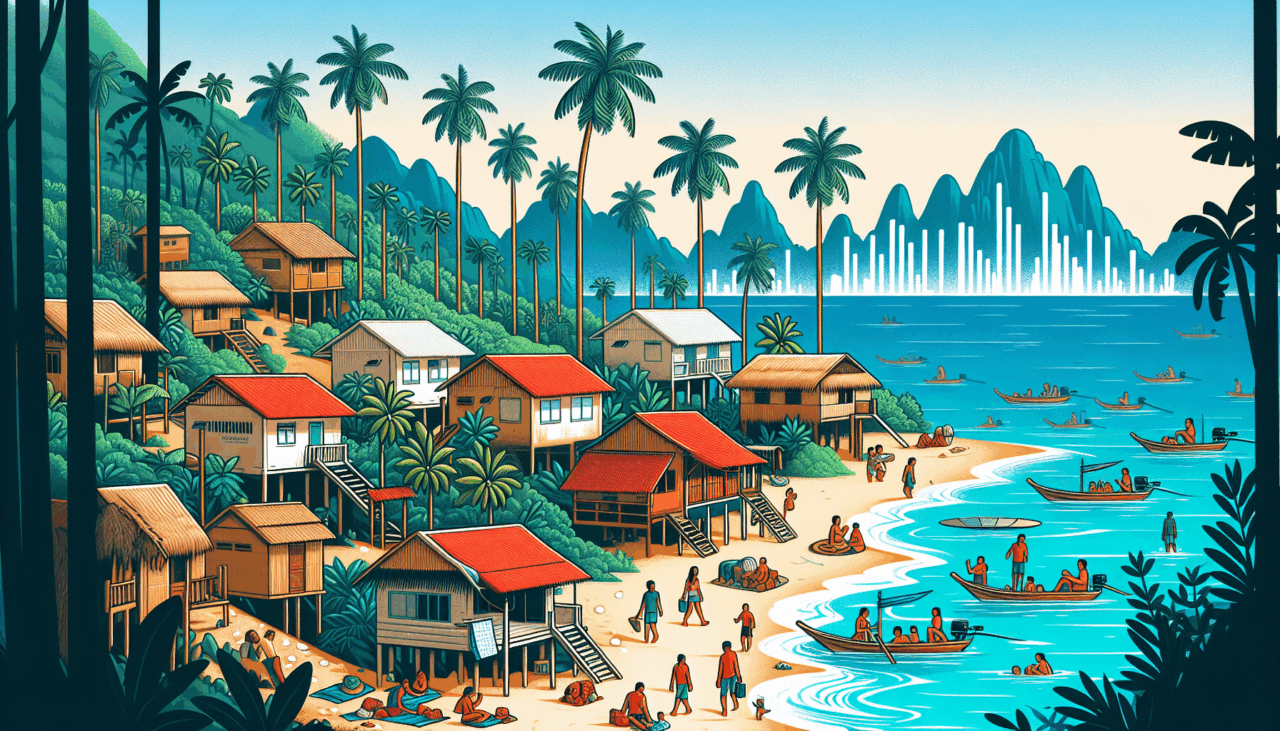The Dark Side of Living in Koh Samui No One Talks About
Ah, Koh Samui. The very name conjures visions of coconut palms swaying against a powder-blue sky, the languid hum of cicadas, and the shimmering, aquamarine expanse of the Gulf of Thailand. If you’ve ever scrolled through an Instagram feed, you know the drill: sun-kissed beaches, infinity pools, and the kind of breakfast spreads that make you question your fidelity to cereal. The island, in its sunlit glory, seduces thousands of newcomers every year—dreamers, digital nomads, and escape artists alike.
But, as any seasoned wanderer will tell you, paradise has a knack for hiding its shadows in plain sight. Behind the postcard-perfect scenes, Koh Samui—like any place worth knowing—has its darker, more complicated side. It’s a side the brochures forget to mention, and it’s precisely this untidy reality that deserves a little sunlight of its own.
When the Rain Comes: Monsoon Melancholy
Let’s begin with the weather, which exudes a capriciousness that would make even the most temperamental artist blush. The dry season is indeed divine, but come November, the monsoon arrives with a vengeance. The rain doesn’t so much fall as it descends in biblical torrents, flooding streets, transforming dirt roads into viscous mudslides, and sending the island’s famously inconsistent power grid into a tailspin.
I recall my first monsoon season—a naive newcomer, umbrella in hand, discovering that even the sturdiest umbrella is little more than a prop in this deluge. There’s a peculiar camaraderie that forms among islanders during these storms: shopkeepers bailing out their storefronts, neighbors sharing torches and soggy tales, all of us bound by our collective dampness. It’s humbling, and occasionally hilarious, but it can also wear on the spirit. The sense of being marooned is real.
Tip: If you’re thinking of setting up camp in Koh Samui, invest in a good waterproof jacket and a sense of humor. Stockpile candles and learn to appreciate the subtle art of doing nothing—sometimes, it’s the only option.
The Cost of Living (and the Cost of Belonging)
It is a well-worn myth that Thailand is cheap. True, you can still find a bowl of noodle soup for the price of a bus ticket, but Koh Samui is not the budget paradise it once was. The island’s popularity has bred a certain inflation of ego—and rent. Landlords, seasoned in the art of the annual price hike, are known to quote “farang prices” (farang being the local term for foreigners, said with a mix of amusement and opportunism).
There’s a deeper cost, too: the price of belonging. As a foreigner, you are always, to some extent, an outsider. The local expat bars are filled with refugees from colder lands, each nursing their sundowner and their private stories of homesickness. It’s possible to build a life here, but it takes time, patience, and a willingness to accept that you will never be truly local.
Insight: Befriend your neighbors, learn a little Thai, and don’t take the occasional double-charged market bill too personally. Remember, you’re a guest—tipping your metaphorical hat to local customs will open more doors than any currency.
Paradise Lost: Environmental Growing Pains
If you listen carefully, you can hear it—the distant rumble of construction, the groan of overtaxed septic systems, the silent retreat of jungle to concrete. Koh Samui is growing, and not all of it gracefully. The island’s infrastructure, built for an earlier, sleepier era, now struggles under the weight of its own popularity.
Plastic waste washes ashore after every storm, and the island’s water supply sometimes runs as dry as a British wit. I once spent a week showering with buckets of rainwater, feeling more pioneer than expat. There’s a bittersweet irony in watching paradise buckle under the strain of its own allure; it’s a reminder that beauty, unguarded, can be its own undoing.
Tip: Do your part—carry a reusable bag, say no to plastic straws, and respect water restrictions when they crop up. Small gestures, perhaps, but islands are made of such grains of sand.
The Invisible Borders of Expat Life
Finally, there is the subtle, persistent challenge of living between worlds. Koh Samui is a crossroads, a place where cultures collide and coalesce, but it is also a place of invisible borders. There are Thai-only spaces, expat enclaves, tourist traps, and sacred grounds. Navigating these boundaries is a skill, one that requires empathy, humility, and the occasional faux pas.
I have, on more than one occasion, found myself at a temple festival, the only foreign face in a sea of locals, as fireworks erupt and monks chant. These are moments of profound beauty and mild embarrassment—when you realize how much you have to learn, and how much you have to let go.
Insight: Accept the discomfort of not always fitting in. The greatest joys of island life are often found in these moments of gentle dissonance, when the world expands just a little beyond your comfort zone.
So yes, Koh Samui remains a paradise—but it is a paradise with shadows, with storms, with the occasional bout of existential humidity. To live here is to embrace both the light and the dark, to find humor in the power cuts and poetry in the rain. In the end, perhaps that’s the real magic: discovering that paradise, like life itself, is always more complicated—and more interesting—than it first appears.

Comments (0)
There are no comments here yet, you can be the first!